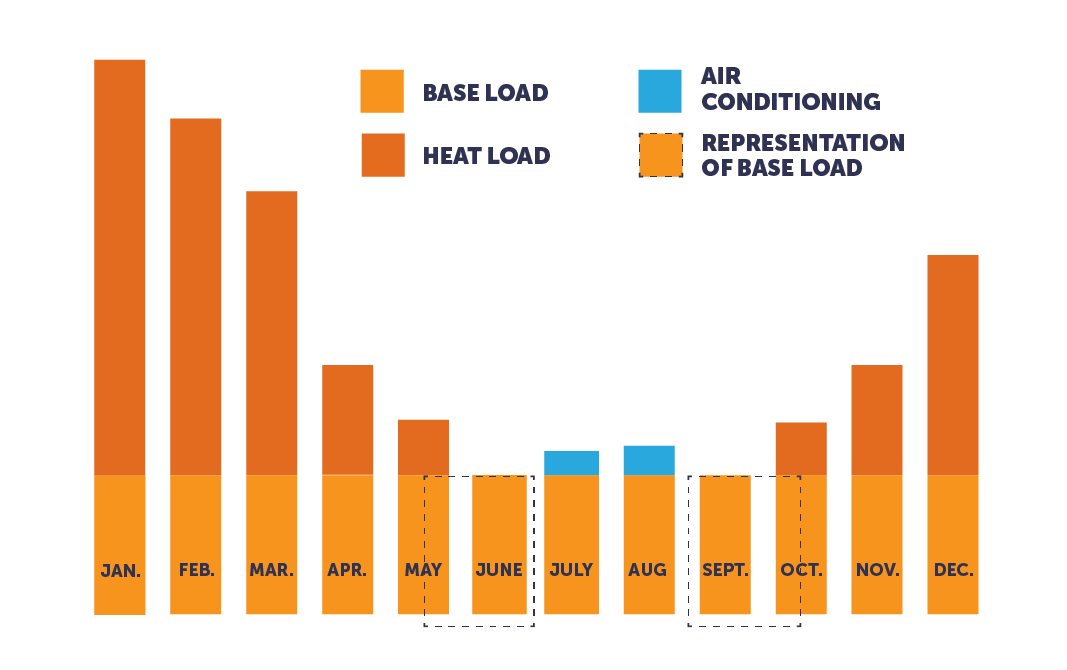Understanding your energy usage
— NOT ALL ELECTRICITY USE IS THE SAME —
Some electricity use is steady year-round (base load energy usage), while other use spikes in winter (heat load energy usage). Knowing the difference helps explain why your bill fluctuates.
 Base load Energy Usage: Everyday essentials like lighting, refrigerators, freezers, water heaters, and other electronics that run constantly throughout the year. This steady, always-on electricity used year-round forms the base load of your bill.
Base load Energy Usage: Everyday essentials like lighting, refrigerators, freezers, water heaters, and other electronics that run constantly throughout the year. This steady, always-on electricity used year-round forms the base load of your bill.
Your May to June and September to October bills typically provide a good representation of your base load, as they usually exclude heating and cooling.
If your base load has increased, it could point to changes in your household. This is different from seasonal spikes caused by things like heating, air conditioning, or pool pumps, which only affect your usage at certain times of the year.
Heat Load Energy Usage: Electric heating systems run longer when the temperature drops, which causes a seasonal spike to your bill. This forms the heat load of your bill.
- Heat load impacts your winter heating bills from October to May.
How does consumption impact your energy bill?
There are only a few things that can make your bill increase more than $80-$100 in a single month
Install a programmable thermostat for your electric baseboard heaters to make setting back your heat while sleeping or away easier for consistent energy savings. For every 3°C lower, you could save 6% on your electric heating costs.
Keep your central heating system in tip top shape by having it checked by a certified service professional at least once per year.
Cutting your shower time by just 2 minutes can save up to 10 litres of water and reduce energy costs from heating less water.
Cold water washing can easily save you over 50%
Reduce with LED bulbs, they use 75% less energy and last 25X longer than regular incandescent bulbs.
Use small cooking appliances when you can, especially in the summer months.
Use power bars on home entertainment and computer systems and switch the power bar off when not in use.
Use a clothesline to dry clothes whenever possible.
To effectively use a dehumidifier, place it in a central location away from walls to ensure good air circulation, keep doors and windows closed, and set the humidity between 45% and 55%.
Central and mini split heat pumps can save you money most of the year, but in the extreme cold, your system’s back-up heat (electric furnace or baseboards) can kick on without you noticing, which can lead to much higher bills.
Central and mini split heat pumps can save you money most of the year, but in the extreme cold, your system’s back-up heat (electric furnace or baseboards) can kick on without you noticing, which can lead to much higher bills.
Other Factors that can affect energy use
- More people at home such as guests, new baby, or working from home
- Additions to the home or new high-energy items like a hot tub
- Changes to how you heat your home, like burning less wood or more reliance on baseboard heat
- Skipping equipment maintenance can reduce efficiency
- Lifestyle choices--laundry, dishwashing, and cooking--all add to your energy use, depending on your habits









